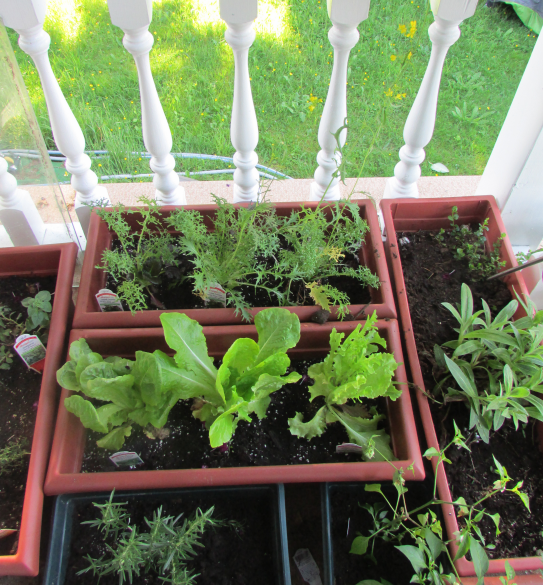By Katie Stobbart (The Cascade) – Email
Print Edition: June 5, 2013
Little tastes better and more satisfying than crisp produce grown just outside in the garden. No film of chemicals, no toxic emissions polluting the air to bring food to my table – just the simplicity of going outside, harvesting some lettuce and tomatoes, and making a salad.
Unfortunately, many students miss out for lack of space living in apartments, where outdoor area is limited to the balcony. But it’s still possible and even easy to grow your own herbs, vegetables, and flowers in a small space; a little creativity and a small budget is all you need.
To start a basic garden, you will need soil, planters, healthy plants (or seeds, if you prefer), a watering can and a balcony that gets some sunlight.
Planters come in a variety of different shapes and sizes. There are ones that can be set up on balcony rails and long narrow planters that can edge a balcony and will hold a few plants each.
When you are choosing a container, make sure you think about how much space your plant will need. You can often find tomatoes and strawberries in hanging baskets, which saves a lot of space. If your balcony does not have a hook to hang a basket from, you can find wire stands for baskets that have room underneath for other plants.
To put store-bought plants in your own containers, gently press all sides of the container to release the plant and dirt. Use one hand to keep excess dirt from falling and tip the container slightly, and then use your other hand to very gently pull the plant and dirt from the container. The dirt should mostly stay in the container’s shape; squish it a little to stimulate the roots, then put it into your own planter, packing some fresh dirt around the stem of the plant. Now that it’s planted, you can water your new plant.
Herbs are easy edible plants to take care of. Chives, lavender, rosemary, oregano and mint are all useful additions to a garden. Fresh herbs are great for cooking and prolific if you care for them and take regular cuttings. When it gets colder, you can bring them inside to a sunny window.
To add personal touches to my balcony garden, I like to look at thrift stores for cheap finds. I just picked up a sturdy little teapot to hold mint. If a pot doesn’t have good drainage (holes in the bottom) put some small stones under the dirt. If you’re planning to grow mint, maybe to make mojitos this summer, I would advise planting it in its own container and not too close to other planters. It can reach over and choke out your other plants.
Lettuce is also easy to grow. You can buy a few different varieties – I planted a selection this year and they are all delicious. One popular type is butter crunch lettuce if you only want to try one kind. Look for healthy fresh leaves, bright green with no brown spots. It should look good enough to eat! I have good results from misting lettuce in addition to watering.
If you’re buying plants, look for lots of buds; more flowers usually means greater yield.
Be aware of your plants’ needs. The amount of sun and water required will differ from plant to plant. A good rule of thumb is to feel the weight of small plant pots – if the plant is heavy it probably has enough water, but if it is light and the soil feels dry you should water it. Plants in desperate need of water will wilt. If you have a basket, water until it starts to drain from the hole in the bottom. In warm weather plants should be watered every day at least once. Aim to water in the morning or evening when it is coolest.
Cultivating a garden in a small space is only limited by your imagination. The size of your budget will depend on how big you want your garden to be and what you want it to look like, but you can often find starter plants for less than $3, and sales on gardening supplies. Growing your own food is also an excellent way to eat healthily this summer.


